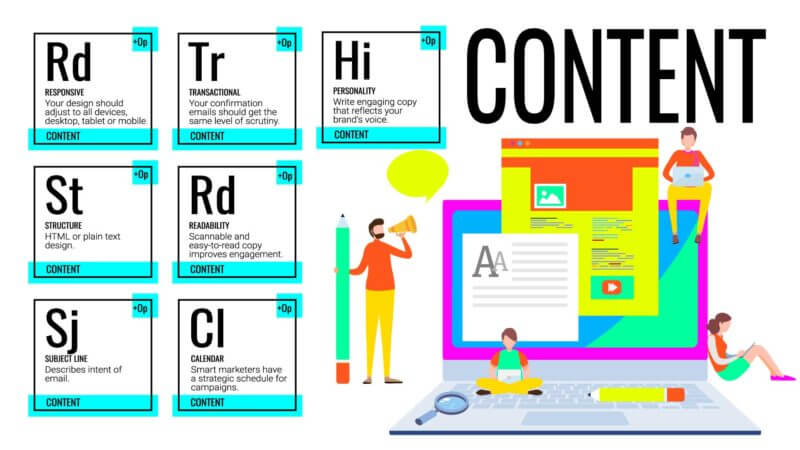
As we’ve been exploring the Periodic Table of Email Optimization and Deliverability in recent weeks, we’ve looked at Permission, Trust, Infrastructure and Audience. This time, we will go into another critical set of elements — those involving Content.
First and foremost, in this age of smartphones and tablets, it’s critical that your emails are designed in such a way that they are Responsive (Rd) – so they are optimized to look good on a wide variety of devices and in many different email clients. You can choose to send emails in HTML or in plain text, depending on the Structure (St) that you prefer or the purpose of the email. For example, you might choose plain text for a Transactional (Tr) email, one sent to confirm an online order or provide shipping information or otherwise facilitate an agreed upon transaction.
Whatever format you choose, you’ll want to carefully craft your Subject Line (Sj), the introduction that tells the recipient about the intent of the message and encourages the person to open it. Once it’s open, the email content should have a Personality (Hi), using images and text that reflect your brand, and it should strive for Readability (Re), speaking your audience’s language in scannable, easy-to-read sentences and paragraphs.
The frequency with which your email messages are delivered also has an important effect on how they are received. Adopt a well-thought-out email marketing Calendar (Ca) structured around your organization’s milestones.

